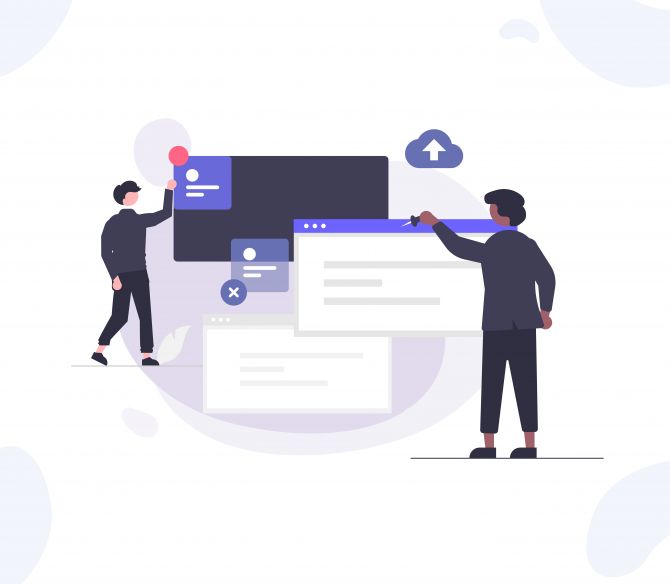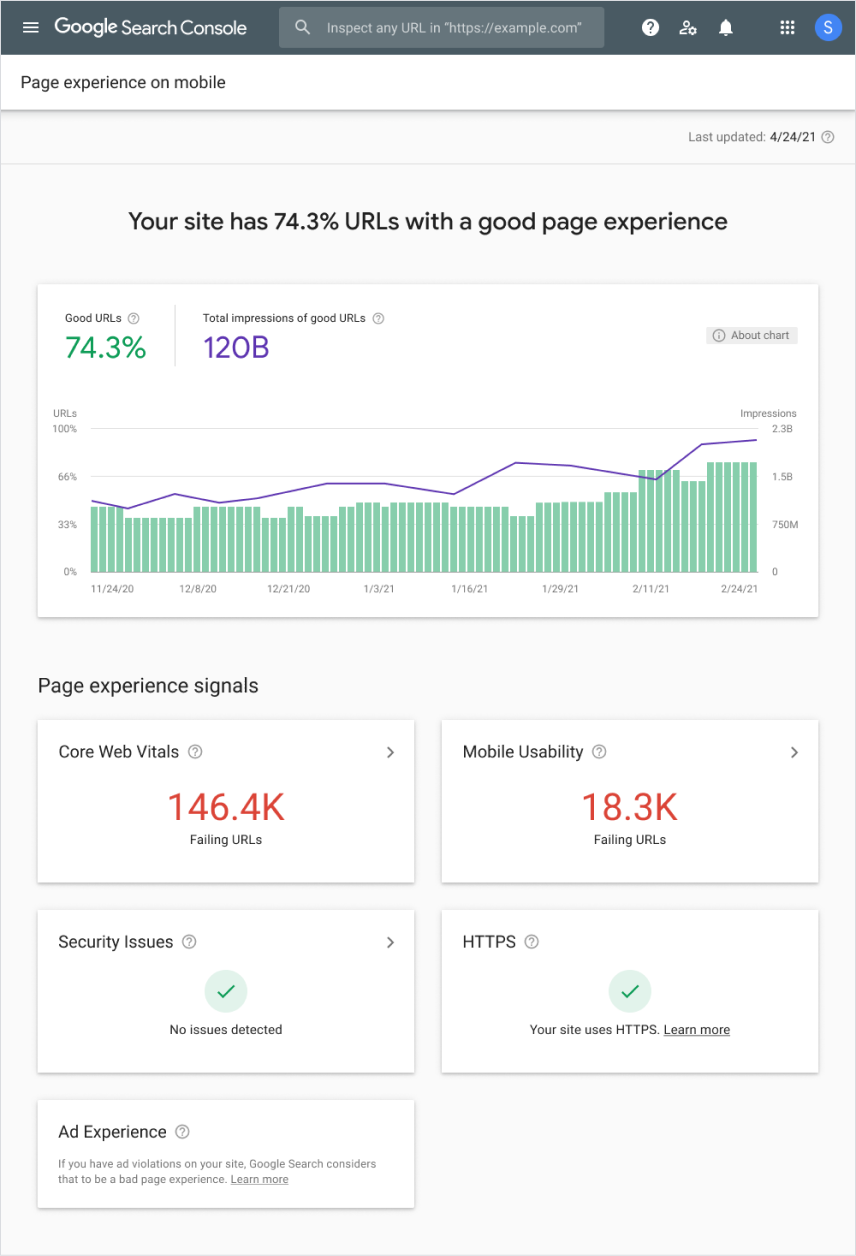
Google rolled out a new ranking algorithm called ‘the Google Page Experience’, designed to judge web pages based on the user experience they deliver. The new update gives significance to what kind of experience users have when they visit a website. If your website delivers a poor user experience, which will be measured by a set of metrics, Google may not rank the pages higher in SERP. From an SEO perspective, it has become a must for websites to be technically optimised to deliver the best possible user experience to get a higher ranking on Google. But, what exactly is page experience and what are the set of metrics that Google is paying utmost importance to? Without further ado, let’s dive deeper into the nitty-gritty of the new Google Page Experience update.
What is the Page Experience Update?
Before we discuss the update, let’s understand the concept of page experience. When a user visits your website, there are a number of factors, which determine how a user perceives the experience of interacting with your website. The page load time, mobile friendliness, and safe browsing experience are some factors that determine the page experience. With the new update, page experience will also be one of the factors that Google considers when generating search results. The page experience will be determined by a number of signals that will help in creating a great user experience. Google will assess all the signals before giving a website the overall score for ‘page experience’. Page owners can view their scores by visiting the new page experience report in the Search Console.
Understanding the Different Signals
Page owners need to have a clear understanding of the different page signals and their significance to deliver a good page experience. Read on to understand each of the signals that are assessed to determine page experience score.
Core Web Vitals
Core web vitals are user-centric, real-world metrics that give a score to a web page based on interactivity, load time and stability of content while the page is loading. All these metrics fall under Largest Contentful Paint (LCP), First Input Delay (FID) and Cumulative Layout Shift (CLS). These new metrics will also help you monitor the page loading speed and take steps to improve the speed, responsiveness and stability of the website to offer a better user experience.
Largest Contentful Paint - It measures the visual load time of a page. To be more specific, LCP takes into account the time taken for the largest part of the visual content to load on a page. Ideally, LCP should occur under 2.5 seconds of when the page starts loading.
(Image source - Google)
First Input Delay (FID) -This metric measures interactivity and how fast a page becomes responsive. A page should have an FID of less than 100 milliseconds for a good user experience. Any page that takes more than a second to respond indicates it has a slow FID.

(Image source - Google)
Cumulative Layout Shift (CIS)- It measures visual stability. For instance, at times when you visit a website and before you are done with reading a certain section of the content the page scrolls automatically. This is known as page shift. CIS indicates the overall page layout shift when it loads. For optimal user experience, the page should have a CLS of less than 0.1.

(Image source - Google)
Other Factors that Count in Delivering Optimal Page Experience
Mobile-friendliness
With almost everyone depending on cell phones to get all the information they need, it is important for your website to be mobile-friendly. You can refer to free tools for checking the mobile friendliness of the page such as Google Mobile-friendly Test.
HTTPS
If the page is served over HTTPS, your website’s connection is secure and will get a good page experience status. In case your page isn’t served over HTTPS, here’s a guide to learn how to secure your site with HTTPS.
Intrusive Interstitials
Interstitials are full-screen, interactive ads that cover the interface of the website. Make sure your web page doesn’t have interstitials as these make content less accessible.
What Does Page Experience Mean from an SEO Perspective?
Google’s new algorithm update wants your website to be technically optimised to provide the best user experience. This will also help you attain higher rankings for targeted keywords and topics. Users generally decide whether to stay on the website or not in the initial 10-15 seconds of visiting the website. A good user experience will also improve the conversion and bounce rates and your revenue across different marketing channels. That’s not all. It will also affect the website’s ability to appear as featured snippets, top stories and rich results.
Measuring the Core Web Vitals Report
The Core Web Vitals report will show the performance of the pages based on the three metrics. The performance status of the URLs are divided into three categories- ‘poor’, ‘needs improvement’ and ‘good’. Based on the performance status, the URLs are clubbed together for the three metrics- LCP, FID and CIS. You can view the report and make changes to the page to improve the user experience. After making the changes, you can ‘validate the fixes’ in the report to start a 28-day monitoring session. During this monitoring period, the report with the particular fixes will have a pending status. Once the 28-day monitoring period is over, you will get a “passing” or “failing” status.

(Source- Google)
Measuring Page Experience Report
Google wants to provide webmasters with more actionable insights and to make this happen, it has introduced Page Experience Report in the search console. The Page Experience report shows data based on each metric during a period of 90 days. The report will show the pages that provide a ‘good’ user experience to the visitors. The report includes existing Core Web Vitals report with other components such as the absence of intrusive interstitials, HTTPS security and mobile-friendliness. Webmasters can see valuable metrics including the percentage of URLs with good page experience etc. that will help in quick evaluation of the performance.

(Image source - Google)
Parting Thoughts
Page Experience update is a reminder to always put your audience first. Make sure that the content caters to easy accessibility and user experience. However, you need to remember that Google will still rank pages with overall good information, irrespective of the page experience. As said by Google, ‘a great page experience cannot overripe having great page content’.











